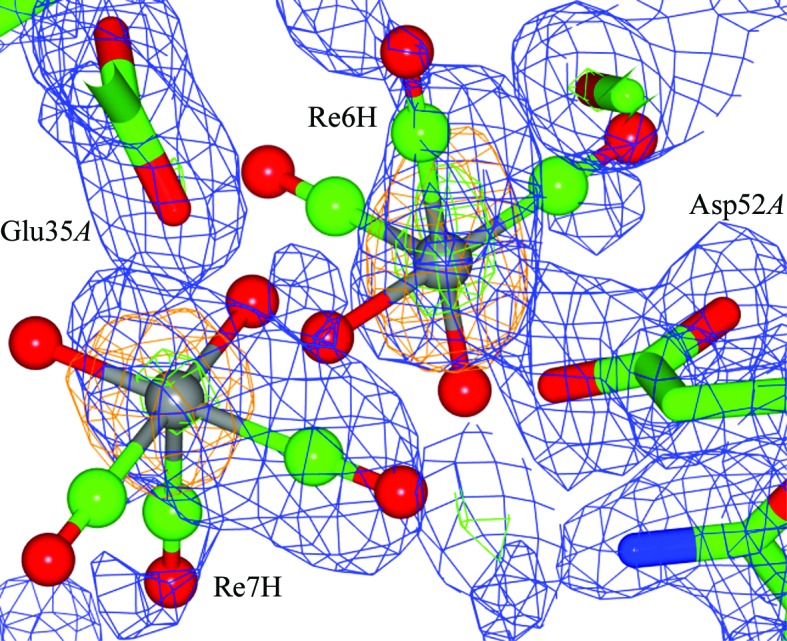Figure 3.

Composite OMIT maps of the Asp52A and Glu35A binding sites coordinating to fac-[Re(CO)3(H2O)2]+, indicating the close proximity of the two Re atoms to each other. The relative positions of the Re atoms are clearly defined by the anomalous map to σ levels of 14.3 and 14.8. Clashes occur between the carbonyl and aqua ligands of the two Re atoms. The respective orientation of the fac-[Re(CO)3]+ moieties has been placed as well as possible, taking into account the limited 2F o − F c density. An F o − F c electron-density peak (6σ) is found in the vicinity, but its assignment is chemically uncertain and was therefore not made. The likely explanation for this layout, since their summed occupancies is less than 100%, is that a fraction of the unit cells in the crystals have a rhenium in one location and another fraction favours the nearby location. An alternative is that it is a dirhenium compound, for which there are several possibilities such as oxo-bridged, carbonyl bridged or metal–metal complexes. Electron-density maps are contoured as in Fig. 1 ▸. This figure was prepared using CCP4mg (McNicholas et al., 2011 ▸).
